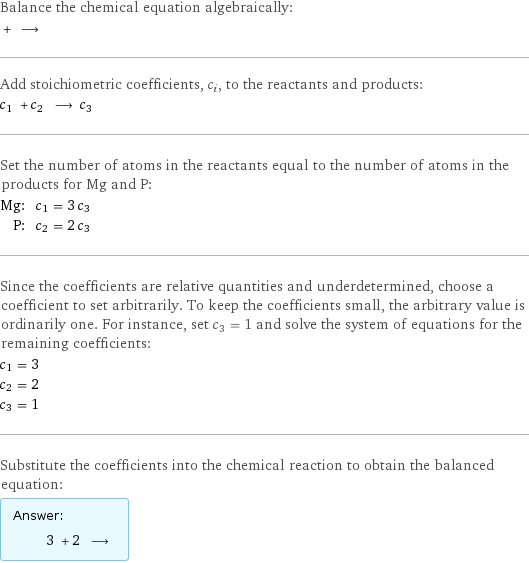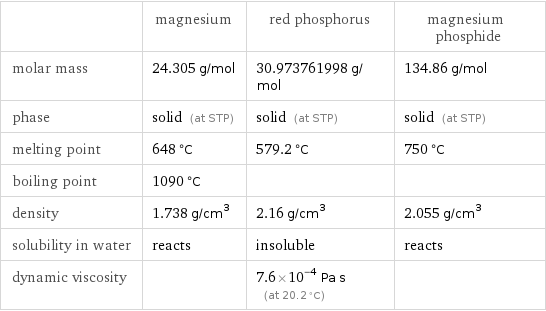Input interpretation

magnesium + red phosphorus ⟶ magnesium phosphide
Balanced equation

Balance the chemical equation algebraically: + ⟶ Add stoichiometric coefficients, c_i, to the reactants and products: c_1 + c_2 ⟶ c_3 Set the number of atoms in the reactants equal to the number of atoms in the products for Mg and P: Mg: | c_1 = 3 c_3 P: | c_2 = 2 c_3 Since the coefficients are relative quantities and underdetermined, choose a coefficient to set arbitrarily. To keep the coefficients small, the arbitrary value is ordinarily one. For instance, set c_3 = 1 and solve the system of equations for the remaining coefficients: c_1 = 3 c_2 = 2 c_3 = 1 Substitute the coefficients into the chemical reaction to obtain the balanced equation: Answer: | | 3 + 2 ⟶
Structures

+ ⟶
Names

magnesium + red phosphorus ⟶ magnesium phosphide
Chemical names and formulas

| magnesium | red phosphorus | magnesium phosphide Hill formula | Mg | P | Mg_3P_2 name | magnesium | red phosphorus | magnesium phosphide IUPAC name | magnesium | phosphorus | trimagnesium phosphorus(-3) anion
Substance properties

| magnesium | red phosphorus | magnesium phosphide molar mass | 24.305 g/mol | 30.973761998 g/mol | 134.86 g/mol phase | solid (at STP) | solid (at STP) | solid (at STP) melting point | 648 °C | 579.2 °C | 750 °C boiling point | 1090 °C | | density | 1.738 g/cm^3 | 2.16 g/cm^3 | 2.055 g/cm^3 solubility in water | reacts | insoluble | reacts dynamic viscosity | | 7.6×10^-4 Pa s (at 20.2 °C) |
Units
